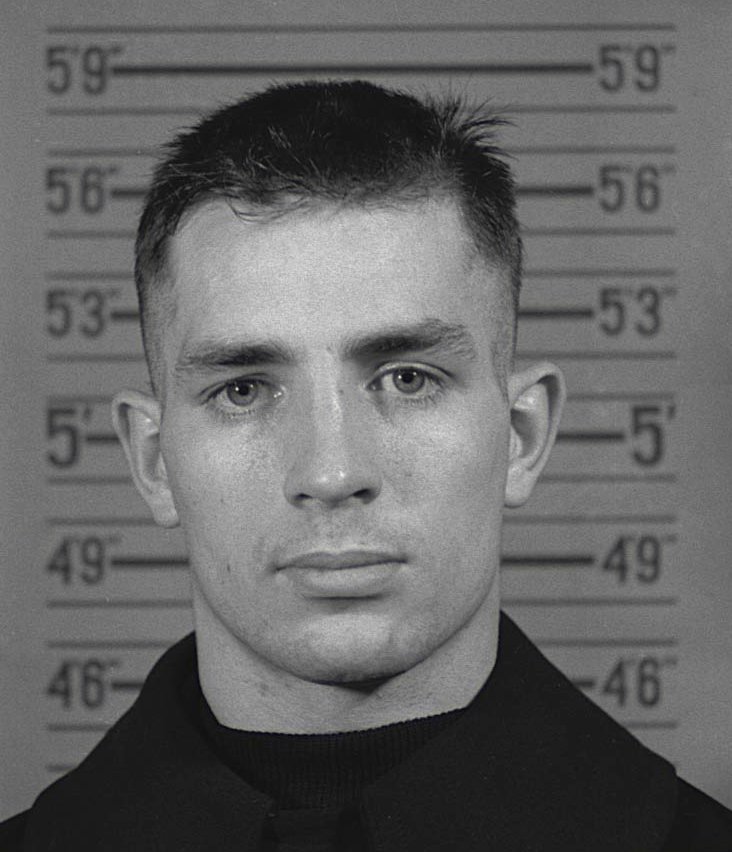Jack Kerouac

Jack Kerouac, born in Lowell Massachusetts as Jean-Louis Lebris de Kerouac on March 12, 1922, was an American novelist and poet whose work significantly influenced the Beat and Counterculture generations of the 1950s and 1960s. Kerouac’s life was a tapestry of adventure, creativity, and personal struggle, all of which found their way into his groundbreaking literary works.
Kerouac was the youngest of three children born to French-Canadian parents, Leo-Alcide Kerouac and Gabrielle-Ange Lévesque. His early life was marked by the loss of his older brother, Gerard, who died at the age of nine from rheumatic fever. This loss had a profound impact on Kerouac, who often referred to Gerard as a spiritual figure in his life and work.
Kerouac’s literary journey began at a young age. He was a gifted athlete and scholar, earning a football scholarship to Columbia University in New York City. However, his academic career was cut short due to a leg injury and subsequent conflicts with his coach. It was during his time at Columbia that Kerouac met Neal Cassady, a charismatic and free-spirited individual who would become a significant influence on his life and writing.
The 1940s and 1950s were a period of intense travel and exploration for Kerouac. He crisscrossed the United States, often hitchhiking or riding in cars with friends, seeking experiences that would fuel his writing. These journeys laid the foundation for his most famous work, “On the Road,” published in 1957. The novel, written in a spontaneous, stream-of-consciousness style, captured the essence of the Beat Generation’s quest for freedom, adventure, and self-discovery.
Kerouac’s writing style was as unique as his life. He often composed his works on a continuous scroll of paper, typing without stopping to create a fluid, unedited narrative. This method, which he called “spontaneous prose,” was a reflection of his belief in the immediacy and authenticity of experience.
Despite his literary success, Kerouac’s personal life was marked by struggle and tragedy. He battled alcoholism, which ultimately contributed to his early death at the age of 47 on October 21, 1969. His final years were spent in relative seclusion in Florida, where he continued to write but struggled with the pressures of fame and the changing cultural landscape.
Kerouac’s legacy endures as a symbol of the Beat Generation and a pioneer of modern American literature. His works, including “On the Road,” “The Dharma Bums,” and “Big Sur,” continue to inspire readers and writers alike with their raw honesty, poetic language, and unapologetic exploration of the human condition. Kerouac’s unique voice and vision have left an indelible mark on literature, making him one of the most influential figures of the 20th century.
On the Road
Summary:
The story is narrated by the protagonist, Sal Paradise, who embarks on a series of road trips that take him from the East Coast of the US to the West Coast and back again, looking for adventure, freedom, and a deeper understanding of himself and the world around him.
The story is divided into five parts, each chronicling a different leg of Sal’s journey. During their travels, Sal and Dean encounter a diverse assortment of characters, comprising of fellow travelers, poets, and musicians. Along the way, they experience the highs and lows of life on the road, from exhilarating moments of freedom and discovery, to periods of loneliness and despair.
One of the central themes of “On the Road” is the search for meaning and purpose in a rapidly changing world. Their travels take them to various iconic locations, including New York City, Denver, San Francisco, and Mexico City, “On the Road” is a celebration of the American spirit of freedom and adventure as well as a rebuke of the conformist values of post-World War II society.
In the winter of 1947, the reckless and happy Dean Moriarty, recently out of yet another period spent in jail and just married, arrives in New York City where he meets Sal Paradise, a young writer surrounded by intellectual group of friends, among which the poet Carlo Marx.
Dean captivates Sal, and a friendship between the two developes, which will lead to three years of restless traveling back and forth across the country. By way of a combination of bus rides and adventurous hitchhiking escapades, Sal manages to reach his much-dreamt of west and meet up with Dean and other friends in Denver, he then subsequently continues the journey west alone, working as a fieldworker in California for a period of time.
The following year, Dean returns east again to meet up with Sal, disrupting yet again Sal’s stable life. Together they drive west and experiece many crazy adventures along the way, at Bull Lee’s in New Orleans, eventually ending up in San Francisco.
The following winter, Sal meats up with Dean, and this time they blaze across the country yet again and Dean settles in New York for a period of time.
In spring, Sal travels solo to Denver, but Dean soon after joins him and they continue south all the way to Mexico City this time. Throughout this adventure there is relentless moving around, there are also a multitude of colorful characters, diverse shifting landscapes, dramas, and personal development. Dean, being a great womanizer, will have three wives and four children during the course of these three years. Perceptive Sal, who at the start of the trip is weak and depressed, re-gains joy and confidence in himself and eventualy finds love in the end.
At first Sal is intrigued by Dean, because he seems to posses the active and impulsive passion that Sal lacks, but as it turns out, they both discover that they have a lot more in common than meets the eye. The story itself, is in the details.
